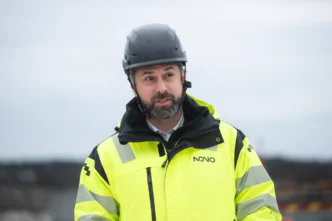Beam, a British climate tech startup developing AI and robotics for offshore wind, has shut down just months after revealing major growth plans. The company, formed by the merger of Rovco and Vaarst, filed for administration this week, resulting in the sudden redundancy of all staff.
The Bristol-based startup aimed to automate the maintenance of offshore wind farms. Its technology was designed to reduce the time and cost associated with servicing renewable energy infrastructure—an ambitious vision that attracted both industry attention and high-profile investors.
A Sudden Collapse After Bold Promises
Beam emerged in September 2023 from the merger of Rovco and Vaarst, two UK startups focused on robotics and AI in the energy sector. Rovco, founded in 2016, brought expertise in subsea technology, while Vaarst, launched in 2021, focused on autonomous data solutions. The combined company positioned itself as a leader in automating offshore wind operations, a critical need in the push for net-zero emissions.
At the time of the merger, Beam announced bold hiring plans. The company said it would bring on 200 new employees over the following year—150 in the UK and 50 more in the U.S. and Asia. It opened offices in New York, Aberdeen, Edinburgh, and maintained its headquarters in Bristol.
Investors had high hopes for Beam’s future. Vaarst had previously raised $20 million in Series B funding from major backers including In-Q-Tel, Equinor Ventures, Legal & General, and Foresight Group. Rovco had also secured funds from angel investors like William Tunstall-Pedoe, the inventor behind Amazon Alexa.
But despite these promising developments, the company struggled to secure further investment. Sources close to the company said Beam had been seeking over £100 million in additional funding for late 2024. That raise never materialized.
This week, Beam filed for administration. According to James Reynolds, the company’s head of talent, all employees were made redundant. The company’s VP of marketing, Helen Batt, wrote on LinkedIn: “The company that over 200 incredibly talented people gave their all to — delivering technology to drive the energy transition — is no more.”
What Went Wrong?
Beam’s collapse highlights the high-risk nature of climate tech and deep tech ventures, especially those requiring significant capital to scale. While its mission to streamline offshore wind operations aligned with global sustainability goals, turning that vision into a viable business model proved more difficult.
The company faced challenges common in the renewable energy sector: long development cycles, high infrastructure costs, and dependency on investor confidence. As financial conditions tightened in 2024, raising the £100 million it needed became a hurdle too high to clear.
Despite Beam’s closure, the need for automation in renewable energy remains pressing. The offshore wind sector continues to grow, and the technologies Beam developed could resurface in other ventures—or even be acquired by industry players looking to expand their capabilities.
For now, however, one of the UK’s most promising climate tech startups has shut its doors. Its closure is a stark reminder that even with smart tech and big ambitions, success in the energy transition space is far from guaranteed.













